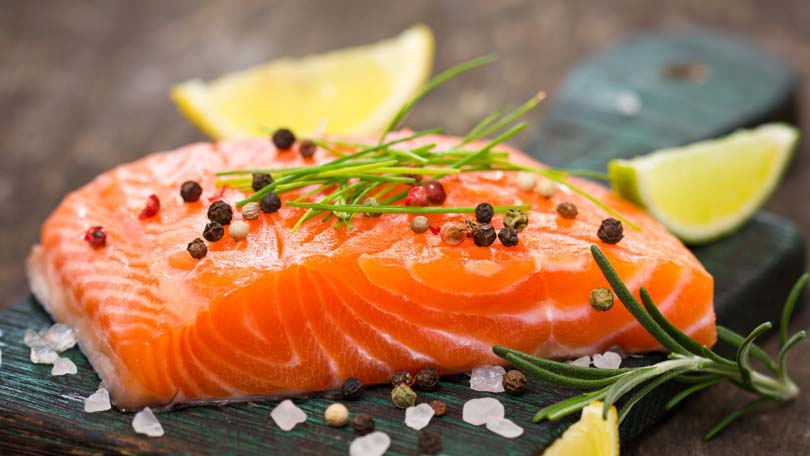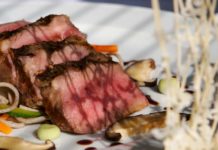
If you’re a fish lover, the thought of grilling salmon may be enough to make you salivate. There are so many different ways to grill it, so many variations, and every one of them is delicious!
Here are some ideas:
- Grilled Salmon Teriyaki
- Salmon with Honey-Citrus Glaze
- Grilled Lemon Rosemary Salmon
- Salmon Fillets with Brown Sugar Pecan Glaze
- Honey Glazed Grilled Salmon Steaks
- Asian Grilled Salmon
- Grilled Herbed Salmon
- Honey Mustard Salmon with Garlic
- Poached Salmon Steaks
- Honey Herb Salmon
- Grilled Salmon with Parsley Butter and Lemon
- Herb Crusted Salmon with Thyme, Mustard and Oregano
- Dilled Salmon Steaks
- Grilled Whole Salmon
- Poached Salmon Steaks with Tarragon
A different salmon recipe for more than two full weeks of the month! It might be a wild idea, but why not just keep the grill on the whole two weeks?
The process of grilling salmon starts with the selection of fresh salmon steaks and fillets that are firm in texture and deep, salmon pink in color. The cuts should be smooth, without gaps or muscle fiber separation; this indicates the fish is old. If the salmon is packaged, the container must be airtight with no visible liquid. Liquid can indicate that the fish was previously frozen and has been thawing, and the longer that the fish is submerged in it, the greater the chances of mushy fish meat after cooking.
What Type Salmon Do You Want?
The two primary types of salmon on the market are farm-raised and wild. Farm-raised salmon is often more plentiful and is purchased at a better price, but there is controversy about how the fish are raised, what they are fed, why they are fed antibiotics and growth simulators, and the taste is not as good as wild salmon.
At a Salmon Days Festival in Sacramento, CA several years ago, there was a big display of tanks filled with salmon for the public along with posters to explain different parts of the salmon life cycle. These informational posters mentioned that the immune system of a farm-raised fish of any type was not healthy and strong and resulted in mushy flesh meat after cooking. They also mentioned that whatever we eat becomes part of our own DNA, tissues and organs, and that if we ate fish with an unhealthy immune system we could not expect that that food would contribute to a strong immune system in us. After reading that, I started to do some checking around on the benefits of wild vs. farm-raised salmon and discovered that the benefits of eating and grilling salmon the wild type are hands-down better. I have only eaten wild salmon ever since.
More Professional Proof
Another interesting tidbit of information is that there is a coalition of chefs worldwide that will only cook and grill wild salmon, not the farm-raised version. They’ve become food purists, and will only cook foods that are ‘real’ foods. These same chefs reported that the difference in taste between grilling salmon steaks and fillets of the two different types is remarkable. The wild salmon is filled with flavor, has great texture, and holds up best to any type of cooking method.
How to Grill Salmon
When grilling salmon, fire up the grill to medium high heat. Sprinkle a pinch of sea salt and freshly ground pepper on fresh or thawed salmon fillets or steaks that have been brushed with butter or olive oil. Lay salmon on grill for two minutes, then turn it one quarter turn so that your dinner guests will see the nice grill marks. After two additional minutes, turn salmon over. Cook until meat is opaque and flaky, about 4 additional minutes.
Serve on a bed of rice with vegetables or with red potatoes.
As you can see, grilling salmon is quite easy. You can always add a sprinkle of any single herb, a combination of herbs, soy sauce, hot sauce, honey mustard sauce or just plain lemon to vary the flavor. But whatever type of salmon recipe you decide to cook, always start with wild salmon.





